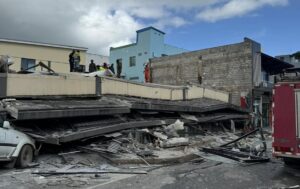Fiji’s Ministry of Health is advising community and workplace leaders to bring back COVID-safe measures learned during the acute outbreak as cases reported from the workplaces increase.
The ministry did not specify the number of cases reported from the workplace nor show the rate at which cases have increased, only stating that in four days, between 30 June and 4 July, the country recorded 181 new cases.
Of the 181, 73 were recorded on 1 July, 21 on 2 July, 44 on 3 July, and 43 cases as of 8 am yesterday morning. Of the total cases, 64 percent were reported in the central division, 24 percent in the West, 10 percent in the North, and two percent in the eastern division.
““For workplaces, we strongly advise that COVID safe measures be more actively promoted and enforced by management,” Permanent Secretary for Health Dr James Fong stated.
“As reported, we continue to see an increasing trend. Recent severe diseases and deaths have been seen only in those with severe comorbidities (underlying illnesses). Also, they are either unvaccinated or have not received the booster dose that would be appropriate given the well-known recommendation for those with severe comorbidities to have at least one booster dose if not both.”
The ministry issued similar advice to hospitals which have since reintroduced more stringent COVID safe measures including the restriction of visitors, strict enforcement of masking and hand sanitisation practices, and strengthening of screening protocols.
The public has also been reminded about the protection that vaccines including the booster dose provide against severe disease and death from COVID-19.
It will also prevent a situation, the ministry says where a big number of people will be seeking hospital care, thus competing for hospital resources with those who need emergency care.
“Acute cases like heart attack patients, or road traffic accident cases will become more difficult to care for. Vaccination with COVID safe measures will keep the number of people needing hospital care very low and ensure that the health care load remains manageable.”










